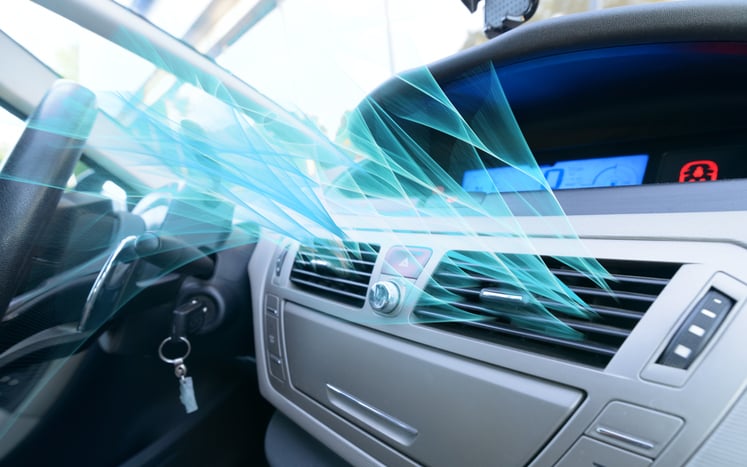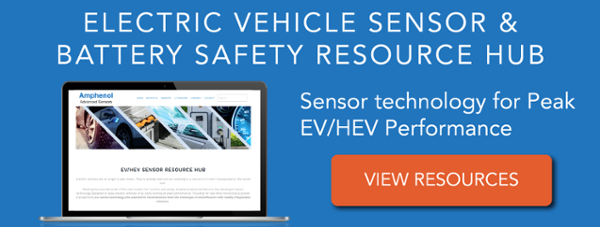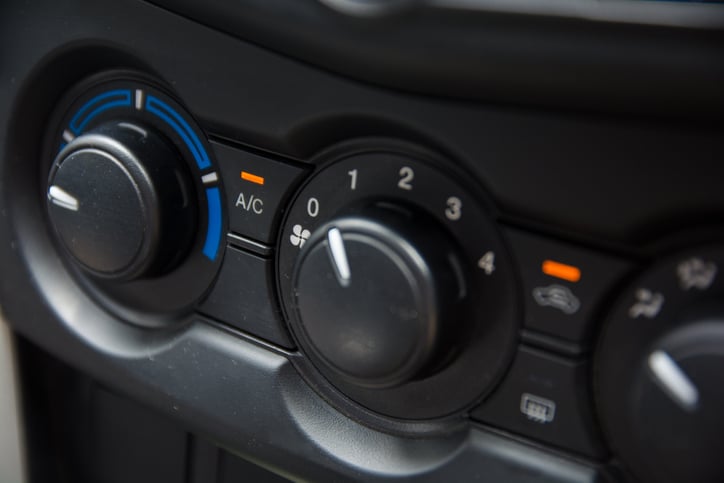Meeting Government Regulations for Electric Vehicles: HVAC

The days of smog-filled skylines, visible miles away from major metropolitan areas, are numbered.
The upcoming influx of electric vehicles (EV) on roads across the globe will be a boon for the natural environment and its air quality. It’s simple math: Exhaust emissions from automobiles decrease as the number of EVs increases.
For activists, scientists, and governments taking action on climate change and dependency on fossil fuels, the electrification of automobiles – and vehicles of all types – is a major win. Now, the focus on EVs and air quality is shifting toward a different environment – the one inside the vehicle.
Many countries are now enacting stringent in-cabin air quality regulations for automobiles of all makes and models – electric cars included. Most notably, China released voluntary standards for certain in-car air pollutants, which all vehicles sold within the country will be expected to meet. More concerning is the lack of in-cabin air quality regulations in the United States; in fact, domestic electric vehicle policy creation is still within its infancy.
For automakers, meeting government regulations for electric vehicles upheld by many countries means building all vehicles to those standards. To do this, electric vehicle HVAC systems will need to be more robust and feature air quality sensor technology to detect and control pollutants that compromise in-car air quality and respiratory health.
The In-Cabin Airborne Contaminants Affecting Drivers & Passengers
Drivers and passengers are spending more time on the road than ever before. The air quality inside a vehicle is directly linked to health issues.
Studies show too much time spent inside a vehicle while driving may lead to serious medical conditions, from exhaust and emissions.
While EVs are zero-emission vehicles, they won’t be an immediate silver bullet to improving air quality. ICE vehicles will still very much be on the roads as they’re slowly replaced by greener counterparts.
In-cabin air quality – regardless of vehicle type – is impacted by two factors:
- Pollutants
- Recirculated air
1. Pollutants
The most obvious contaminant to air quality, pollutants have the biggest impact on the immediate and long-term health of drivers and passengers. Pollutants, however, aren’t limited to just those outside a vehicle that make their way in.
The most common pollutants compromising in-cabin air quality include:
- Exhaust
- Ultrafine particles, such as the carbonaceous soot from diesel exhaust or brake dust
- VOCs (volatile organic compounds, such as hydrocarbons)
Exhaust
While electric vehicles are slated to replace ICE vehicles, that doesn’t mean exhaust is a thing of the past. It’ll be decades before ICE vehicles are completely gone from roads.
As long as traditional cars and trucks are on the road, EV drivers will still be exposed to dangerous car exhaust pollutants from nearby vehicles, such as:
- Nitrogen dioxide
- Ozone
- Carbon monoxide & carbon dioxide
- Sulfur dioxide
- Hydrocarbons
Like with VOCs, prolonged exposure to exhaust fumes has serious negative health impacts.
Fine Particles
Standard vehicle HVAC filtration systems only go so far removing large particulates (e.g. mold spores or dirt) from the air brought inside a car. They don’t cleanse the air of fine particles – typically 25 times less than the diameter of a human hair – such as:
- Dust
- Salts
- Smoke
If inhaled, nanoparticles stay within a person’s respiratory system, exacerbating existing breathing conditions or reducing lung function.
VOCs
With millions of electric vehicles set to hit the road in the coming decade, more drivers and passengers will be exposed to that “new-car smell.” For many drivers, that smell is a defining characteristic of a vehicle just off the lot.
But that scent isn’t much different than paint fumes. Like the smell from a fresh coat of paint, the new-car scent is from the off-gassing of VOCs (volatile organic compounds), or more specifically:
- Acetone
- Benzene
- Formaldehyde
Exposure to the VOCs in a new car takes its toll on drivers and passengers, with common side effects including headaches, fatigue, and dizziness. New regulations in China force automakers to develop electric cars with low VOC interiors to reduce the risk of driver exposure to these hazardous fumes.
2. Recirculated Air
Recirculated air is essentially recycled air, including respired air from breathing and any pollutants or other contaminants inside a vehicle introduced by the occupants or the environment the vehicle is driving in. Humans breathe out carbon dioxide, and when they are in a well-sealed vehicle, the carbon dioxide levels will continue to rise, and vehicles with greater numbers of occupants in the same air space will generate harmful levels of carbon dioxide in relatively short time domains.
In electric vehicles, recirculating air presents a bigger challenge, as many EVs use an HVAC system’s recirculation function to maintain efficiency and conserve energy. It takes less energy to heat or cool recirculated air than it does to heat or cool “fresh” outside air using an HVAC system, but those power savings come at a cost to health. Without a proper filtration system or the presence of new, clean air, vehicle occupants remain exposed to in-cabin air pollutants as well as CO2 that can contribute to short-term issues with attentiveness and longer-term issues with respiratory health.
Explore Our Sensor Technology for Maintaining EV/HEV Peak Performance
Breathing Easy With EV Sensor Technology
The trouble with in-cabin air contaminants is that most drivers and passengers don’t realize their level of exposure to them. Many of the most common airborne impurities are invisible to the naked eye or odorless.
Sensors used in electric cars can play a critical role in helping electric vehicle HVAC systems meet air quality standards. HEPA filters to cleanse in-cabin air are only half the equation of reducing electric vehicle air pollution. Sensors that detect all pollutants and airborne contaminants are the other. These sophisticated sensors can detect ultrafine particulates and gases such as carbon dioxide, NOx, CO, and VOCs inside and outside the vehicle.
Sensor technology does what the five senses can’t: detect pollutants that threaten health, and automatically activate air-cleaning systems. With a filtration system and sensor technology working in tandem, you can reduce exposure to toxic fumes and particles while meeting government regulations for electric vehicles and their in-cabin air quality.
Beyond Air Quality: EV HVAC & Battery LifeWhile certainly in-cabin air quality and passenger safety EV laws deserve the utmost attention, an electric cars HVAC system provides other opportunities to meet EV laws of today and tomorrow. More specifically, EV battery thermal management and optimization. The impact of an EV’s HVAC system on the battery that powers it remains a major concern for vehicle makers. In short, the HVAC system can be a major drain on the vehicle’s power supply, reducing their drivable distance and putting more frequent strain on the grid for recharging. However, advancements in heat pump technology coupled with sensors are giving in-vehicle climate control a new level of energy efficiency. Learn more about the role sensors are playing in reducing HVAC battery drain in our article: “Electric Vehicle HVAC System Optimization With Sensor Technology.” |
Improving Air Quality in Multiple Environments
Representing a major step forward for protecting the natural environment, electric vehicles are a game-changer for drastically reducing emissions. Thanks to anticipated EV policy safety standards for in-cabin air quality leveraging the latest in pollutant sensor technology, EVs are poised to take public health protection to the next level.
Get a Head Start on Meeting In-Cabin Air Quality Standards
Speak with one of our engineers about electric vehicle HVAC system design and the sensors you’ll need for monitoring air quality.





